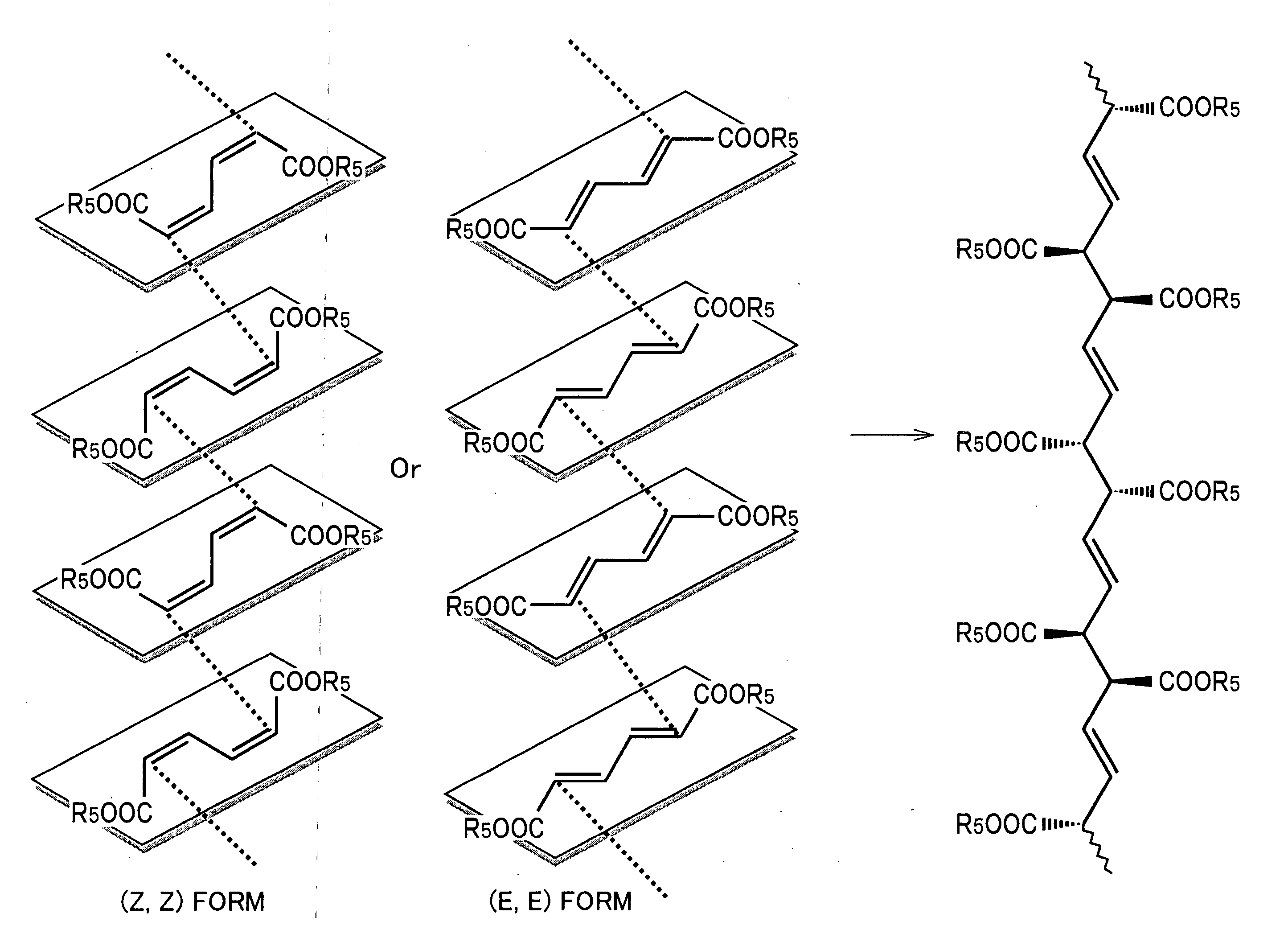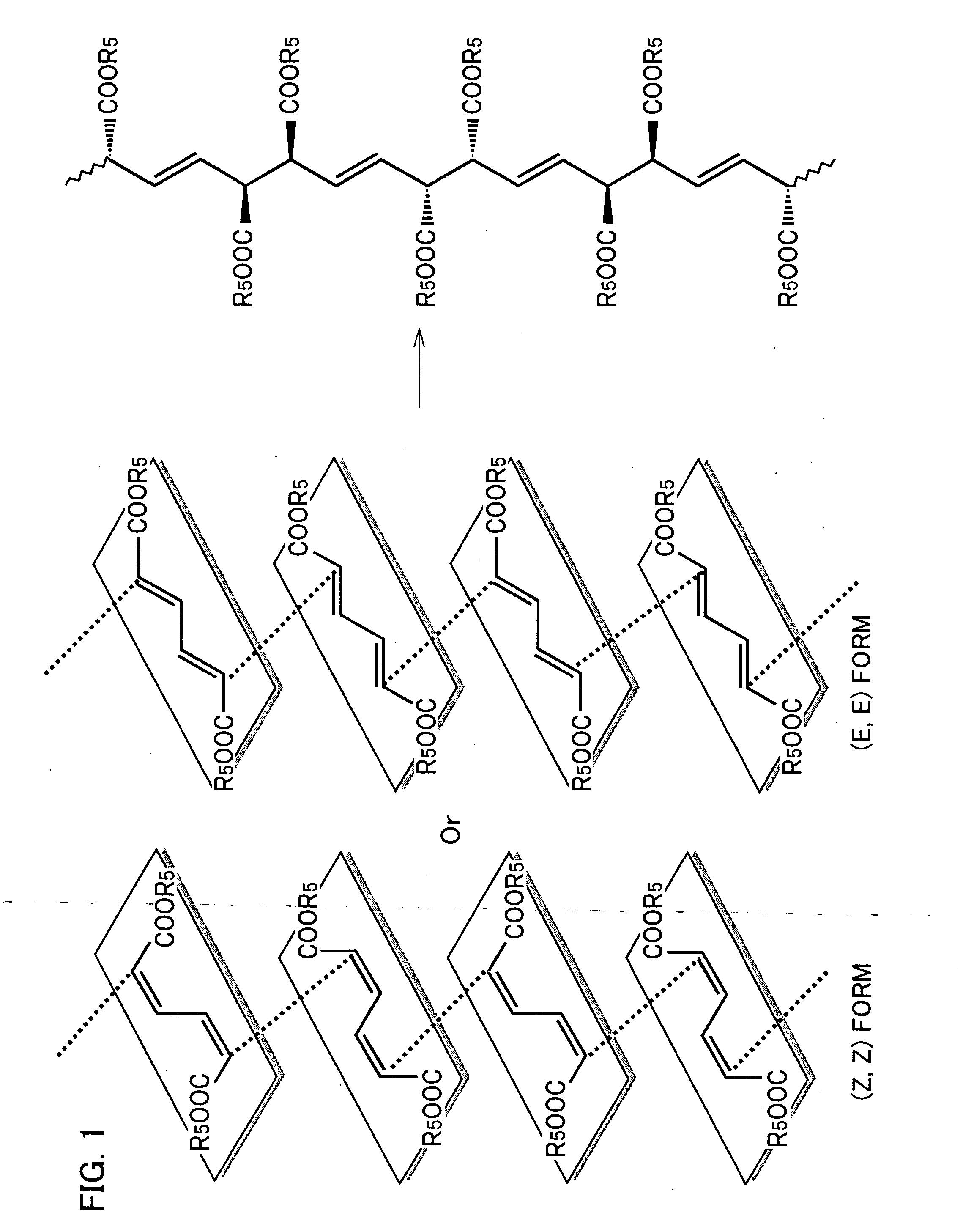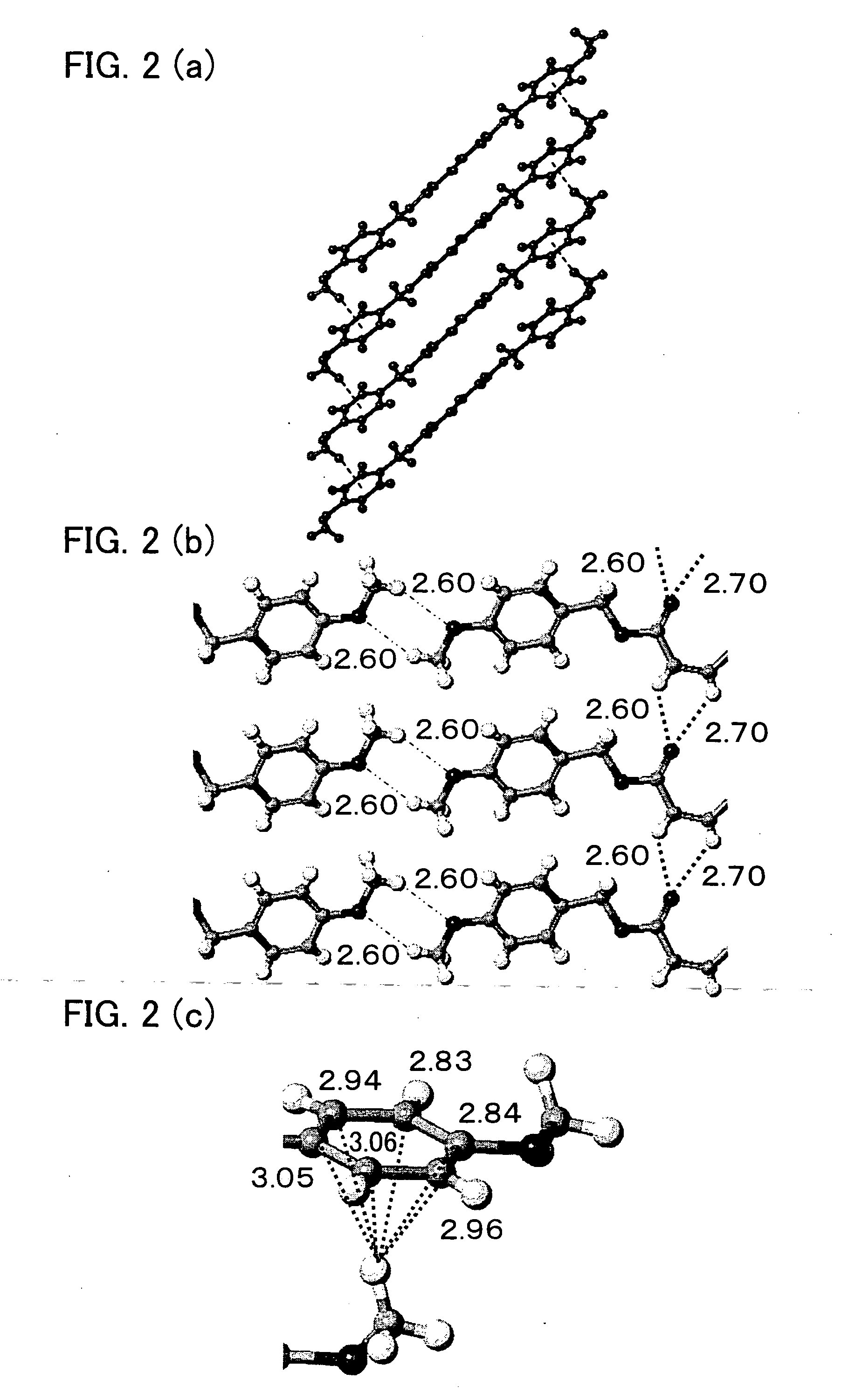Stereoregular polymer and monomer thereof and process for production of both
a technology of stereoregular polymer and monomer, which is applied in the preparation of carboxylic acid esters, chemistry apparatus and processes, and organic chemistry, etc., can solve the problems of not reporting the actual the successful acquisition of disyndiotactic polymer, and achieve the effect of reducing deformation or d
- Summary
- Abstract
- Description
- Claims
- Application Information
AI Technical Summary
Benefits of technology
Problems solved by technology
Method used
Image
Examples
example 1
[0115] (Z, Z)—muconic acid di(4-methoxy benzyl) and (E, Z)—muconic acid di(4-methoxy benzyl) were obtained as follows.
[0116] 2.08 g (14.5 mmoL) (Z, Z)—muconic acid (product of Mitsubishi Chemical) and 20 ml hexamethylphospholamide (product of Tokyo Kasei) were mixed in a 100 mL eggplant-shaped flask; then a calcium chloride tube is attached to the eggplant-shaped flask, and the liquid was stirred until the (Z, Z)—muconic acid dissolved, thus creating a hexamethylphospholamide solution. Then, 5.05 g (36.6 mmol) potassium carbonate (product of Wako Pure Chemical) and 6.06 g (42.1 mmol) 4-methoxy benzyl chloride were added to the solution and the mixture was stirred for three days to cause reaction of the substances, thus obtaining a reaction mixture.
[0117] Next, 200 ml water was added to the reaction mixture, followed by two times extraction with 100 ml chloroform. The extraction liquid was cleaned by water and saturated salt water. Then, the resulting liquid was dried by sodium sul...
example 2
[0129] (E, E)—muconic acid di(4-methoxy benzyl) was obtained as follows
[0130] 3.00 g (21.1 mmoL) (Z, Z)—muconic acid and 30 ml hexamethylphospholamide were mixed in a 100 mL eggplant-shaped flask; then a calcium chloride tube is attached to the eggplant-shaped flask, and the liquid was stirred until the (Z, Z)—muconic acid dissolved, thus creating a hexamethylphospholamide solution. Then, 4.38 g (31.7 mmol) potassium carbonate and 6.61 g (42.2 mmol) 4-methoxy benzyl chloride were added to the solution and the mixture was stirred for three days to cause reaction of the substances, thus obtaining a reaction mixture.
[0131] Next, 300 ml water was added to the reaction mixture, followed by two times extraction with 150 ml chloroform. The extraction liquid was cleaned by water and saturated salt water. Then, the resulting liquid was dried by sodium sulfate, and a spatula of iodine was added thereto before subjected to ultraviolet irradiation for 6 hours using a high-pressure mercury lam...
example 3
[0135] The same reaction as that of Example 1 was carried out; however, instead of 4-methoxybenzylchloride, 4-chrolobenzylbromide, 4-bromobenzylbromide, and 2,3,4,5, 6-pentafluorobenzylbromide were used in the same theoretical amount.
[0136] Table 7 shows the production amount of (Z, Z) form and (E, E) form of the obtained product. The reaction time is shown in the table.
TABLE 7RATIOREACTIONBETWEENTIMEYIELDISOMERSREACTANT(day)(%)(Z,Z):(E,Z)296˜100:0282 99:1189˜100:0378 70:30
[0137] As shown in Table 7, an esterified product was obtained with a high yield. Further, it can also be seen that a mixture of (Z, Z) form and (E, Z) form was obtained in all of the respective cases using halogenides with different benzyl groups. Further, in the product, (Z, Z) form is greater in amount than (E, Z) form in all cases.
PUM
| Property | Measurement | Unit |
|---|---|---|
| Length | aaaaa | aaaaa |
| Length | aaaaa | aaaaa |
| Length | aaaaa | aaaaa |
Abstract
Description
Claims
Application Information
 Login to View More
Login to View More - R&D
- Intellectual Property
- Life Sciences
- Materials
- Tech Scout
- Unparalleled Data Quality
- Higher Quality Content
- 60% Fewer Hallucinations
Browse by: Latest US Patents, China's latest patents, Technical Efficacy Thesaurus, Application Domain, Technology Topic, Popular Technical Reports.
© 2025 PatSnap. All rights reserved.Legal|Privacy policy|Modern Slavery Act Transparency Statement|Sitemap|About US| Contact US: help@patsnap.com



